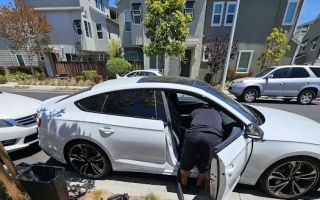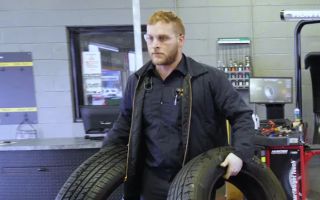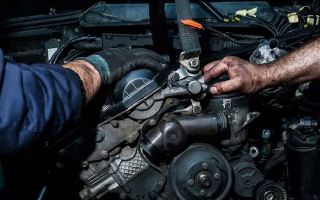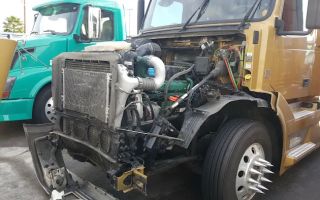How to Fix a Car That Doesn’t Go Into Gear
There’s a sinking feeling when you start your car, but the transmission refuses to cooperate. Whether you’re stuck in your driveway, at a traffic light, or on the side of the road, a car that won’t go into gear is a serious problem. It’s happened to me before, and I remember feeling completely helpless, unsure of what was wrong, and how to fix it. However, over the years and with some trial and error, I’ve learned that while it’s not always an easy fix, there are several potential causes, and many of them are things that you can tackle on your own.
So, let’s walk through this problem step by step. In this article, I’ll share everything I’ve learned about fixing a car that doesn’t go into gear, from simple solutions to more complex fixes that might require professional help. I’ll explain what could be going wrong, how you can diagnose it, and what your next steps should be, whether you’re able to fix the issue yourself or need to call in an expert.

Walter's Auto Repair
5508 Atlantic Ave, Long Beach, CA 90805, USA
1. Check the Clutch Fluid
One of the first things I always check when my car won’t go into gear is the clutch fluid. If you have a manual transmission, your car relies on the clutch system to change gears smoothly. If there’s a fluid leak or if the clutch fluid level is low, the clutch won’t engage properly, and you won’t be able to shift. In fact, this is the most common reason for a car not going into gear, and it’s relatively easy to check.
Here’s what I do when checking the clutch fluid:
- Locate the clutch master cylinder under the hood (it’s usually near the driver’s side of the engine bay).
- Look for the reservoir. It will have a fill line marked on it. If the fluid is below the minimum line, that’s a sign that you need to add more.
- Use the correct fluid for your vehicle (your owner’s manual should specify which one). I’ve found that DOT 3 or DOT 4 brake fluid usually works for most cars.
- If the fluid level is low, top it up, and then check for leaks in the system. If you notice any leaks, it might be time to replace the master or slave cylinders.
In some cases, you’ll need to bleed the clutch if air has gotten into the system. This can be a little trickier, and you might need a friend to help you or a brake bleeding kit. But for the most part, checking and topping up the fluid is a simple and effective way to restore the car’s shifting ability.
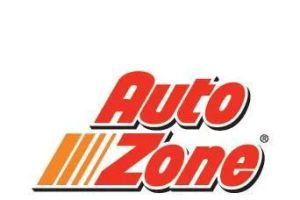
AutoZone Auto Parts
104 S Sanderson Ave, San Jacinto, CA 92582, USA
2. Inspect the Clutch Cable or Hydraulic System
Now, if the fluid levels are fine, but you’re still having trouble shifting into gear, the next culprit to consider is the clutch cable or the hydraulic system itself. Over time, the clutch cable can stretch, break, or become frayed. This prevents it from engaging the clutch properly, and that’s why your car might refuse to go into gear.
If you’ve got a car with a manual transmission, check the clutch cable first:
- Start by popping the hood and locating the clutch cable. You’ll usually find it near the pedal inside the cabin and running towards the engine bay.
- Look for any signs of wear, fraying, or a snapped cable. If the cable is broken, you’ll need to replace it. You can buy replacement cables from your local auto parts store.
- If the cable looks okay, check for any adjustment nuts that might have become loose. Tightening these nuts can sometimes fix the problem.
If your car uses a hydraulic clutch system, things can get a little more complex, as it relies on fluid pressure. Leaks in the hydraulic system or worn-out components could be the cause. In that case, you might need to replace the slave or master cylinder. This could be a job for a mechanic, depending on how comfortable you are working with hydraulics.
3. Check the Gear Linkage
If the clutch system checks out and your fluid levels are topped up, the next thing to inspect is the gear linkage. The gear linkage is the mechanism that connects the shifter inside the cabin to the transmission, and it can become misaligned or damaged over time. When that happens, it becomes nearly impossible to shift into gear.
To check the gear linkage, follow these steps:
- First, look underneath your car to locate the shift linkage. If it looks bent or disconnected, it could be the problem.
- If the linkage looks fine, try moving the shifter while someone else watches underneath the car to see if there’s any movement in the linkage. If there is no movement, the linkage might need to be adjusted or replaced.
If the issue is with the linkage, you may be able to adjust or replace the parts yourself. If you're unsure, though, it’s always best to consult a mechanic who specializes in transmissions.
4. Look for Transmission Issues
If you’ve checked the clutch, cable, and linkage and everything seems fine, but your car still won’t go into gear, it could be a problem with the transmission itself. Transmission problems can range from relatively minor issues, like low transmission fluid, to more severe problems, such as internal wear or a complete failure of the transmission.
Start by checking the transmission fluid level. Low fluid can prevent the transmission from shifting properly. If the fluid looks dirty or burnt, it may need to be changed. If you don’t have experience with changing transmission fluid, I recommend taking your car to a mechanic, as transmission issues can get complicated very quickly.
If the transmission fluid looks fine but the car still won’t go into gear, it’s time to consult a mechanic. It could be a sign of more serious internal damage that requires a professional to repair or rebuild the transmission.
5. Seek Professional Help
Sometimes, despite all your efforts, the problem is beyond a DIY fix. Transmission problems, in particular, can be complex, and there’s a good chance that the issue requires a professional mechanic to diagnose and repair. If you’ve gone through the checks above and nothing seems to resolve the issue, it might be time to call in the experts.
If you’re stranded and need assistance, I highly recommend calling a towing service that specializes in transporting vehicles with transmission issues. You can find reliable services like Rescue & Towing to help you get your car to a qualified repair shop.
Remember, while it’s always great to attempt fixing your car yourself, some problems just require the skills and tools of a professional. Don’t hesitate to seek help when the situation calls for it!



